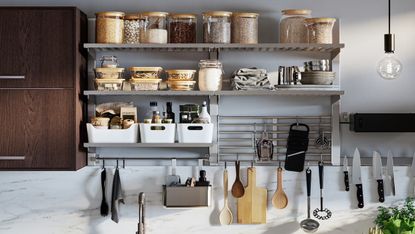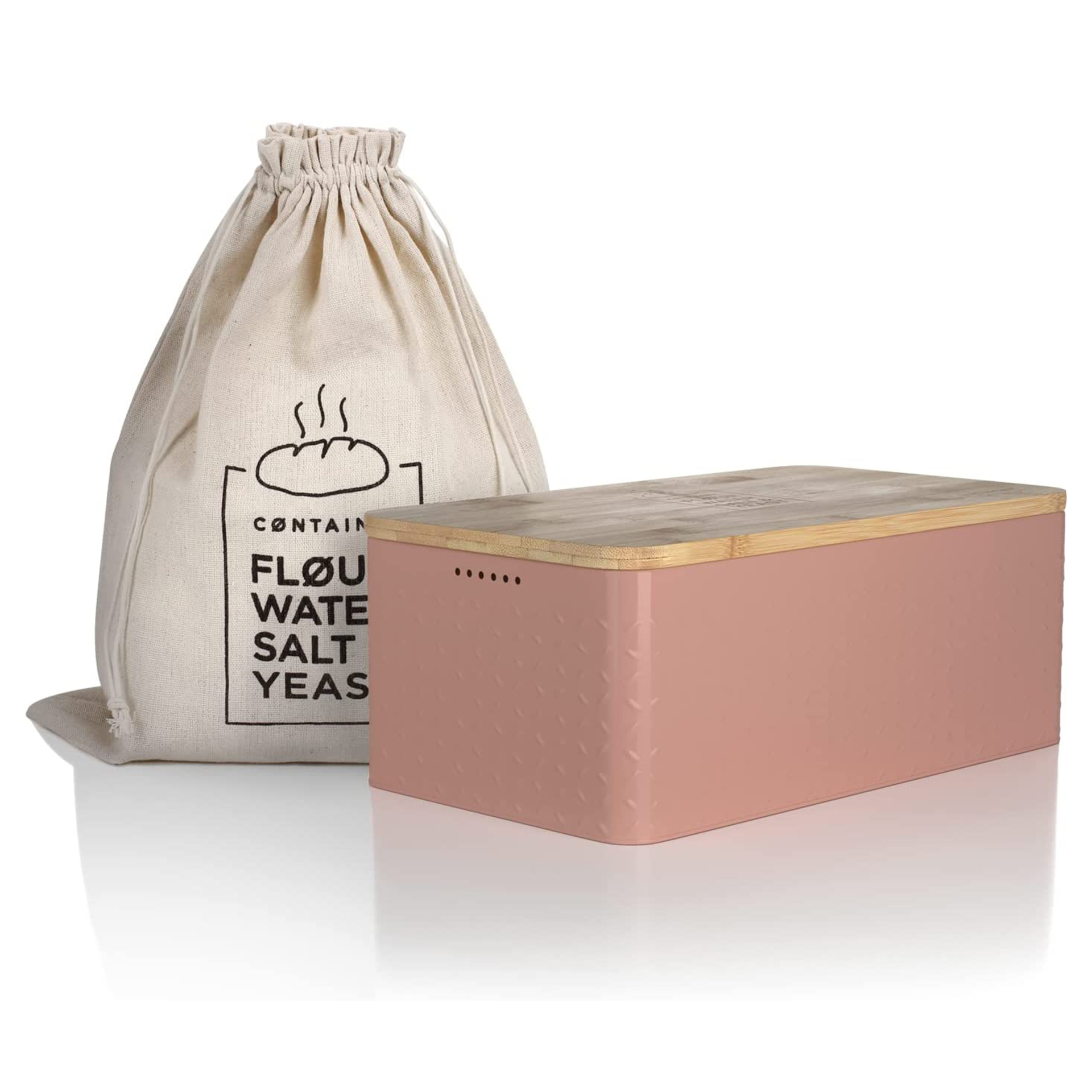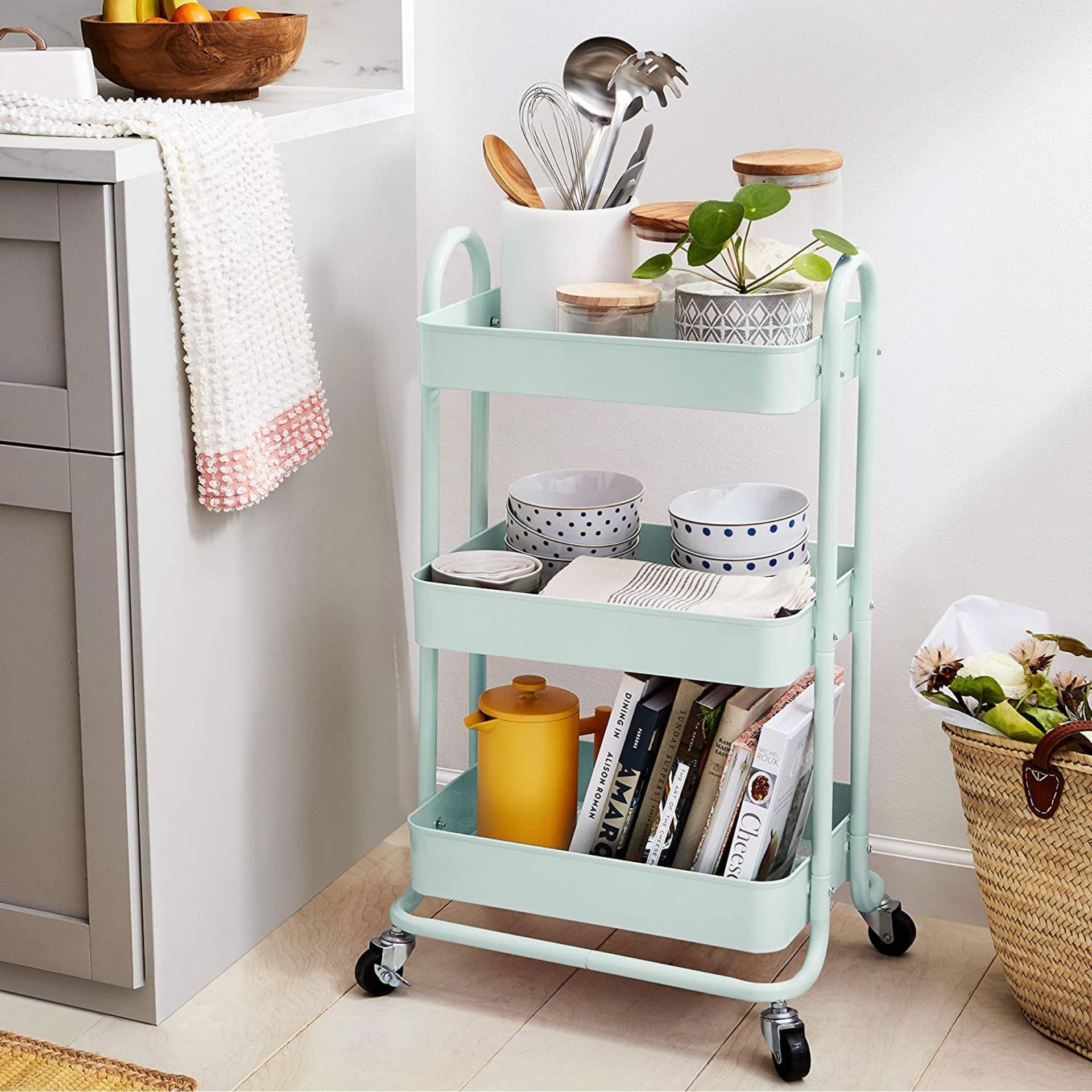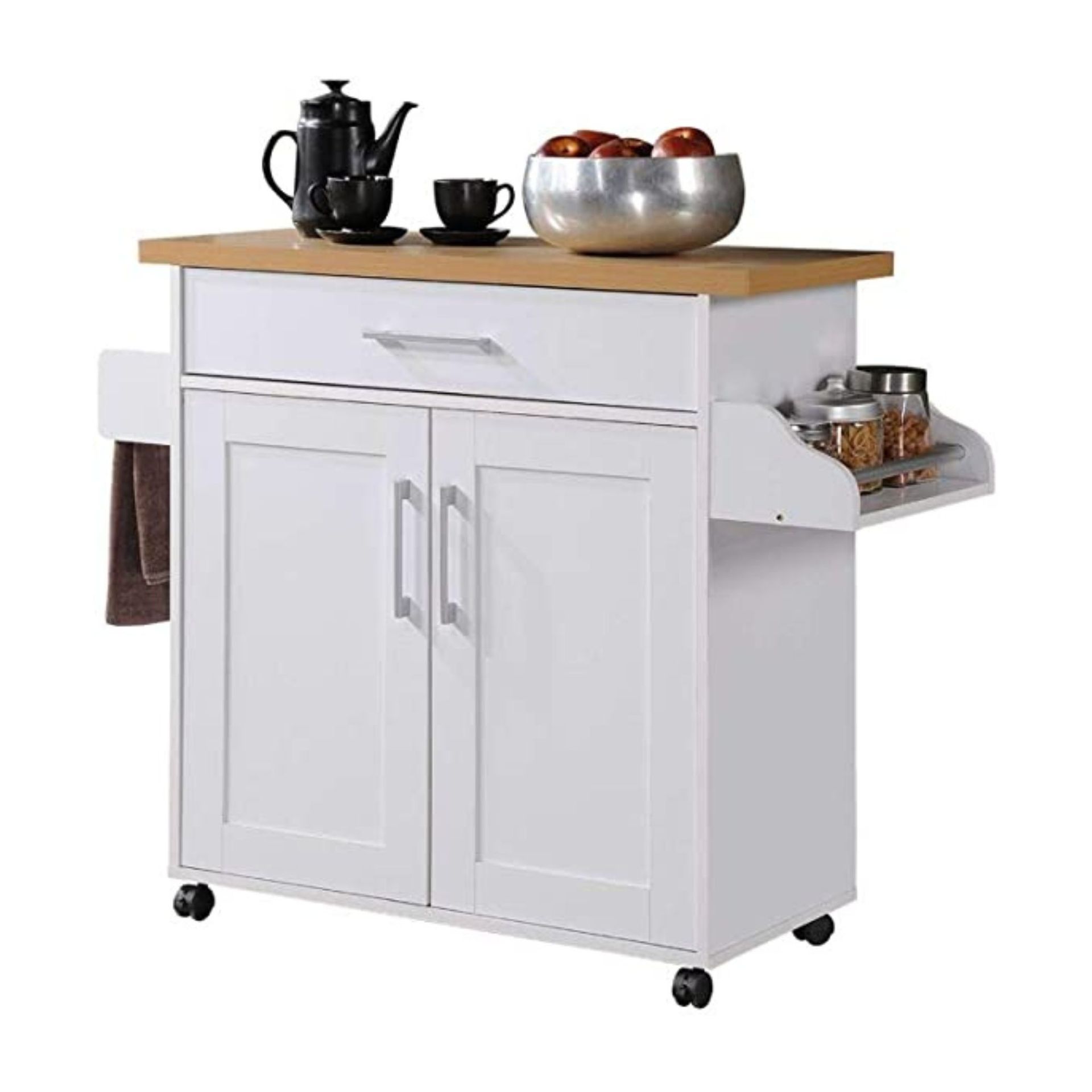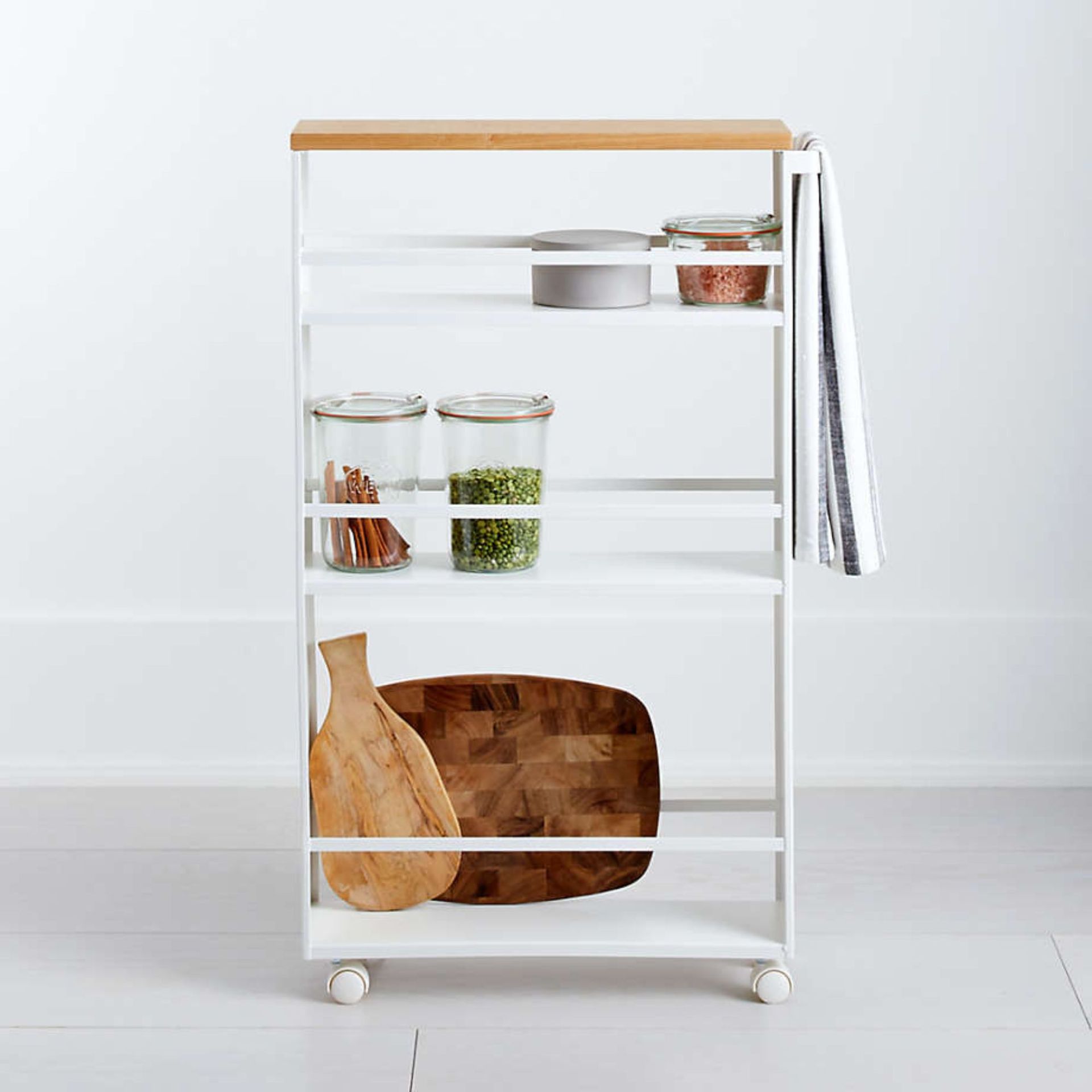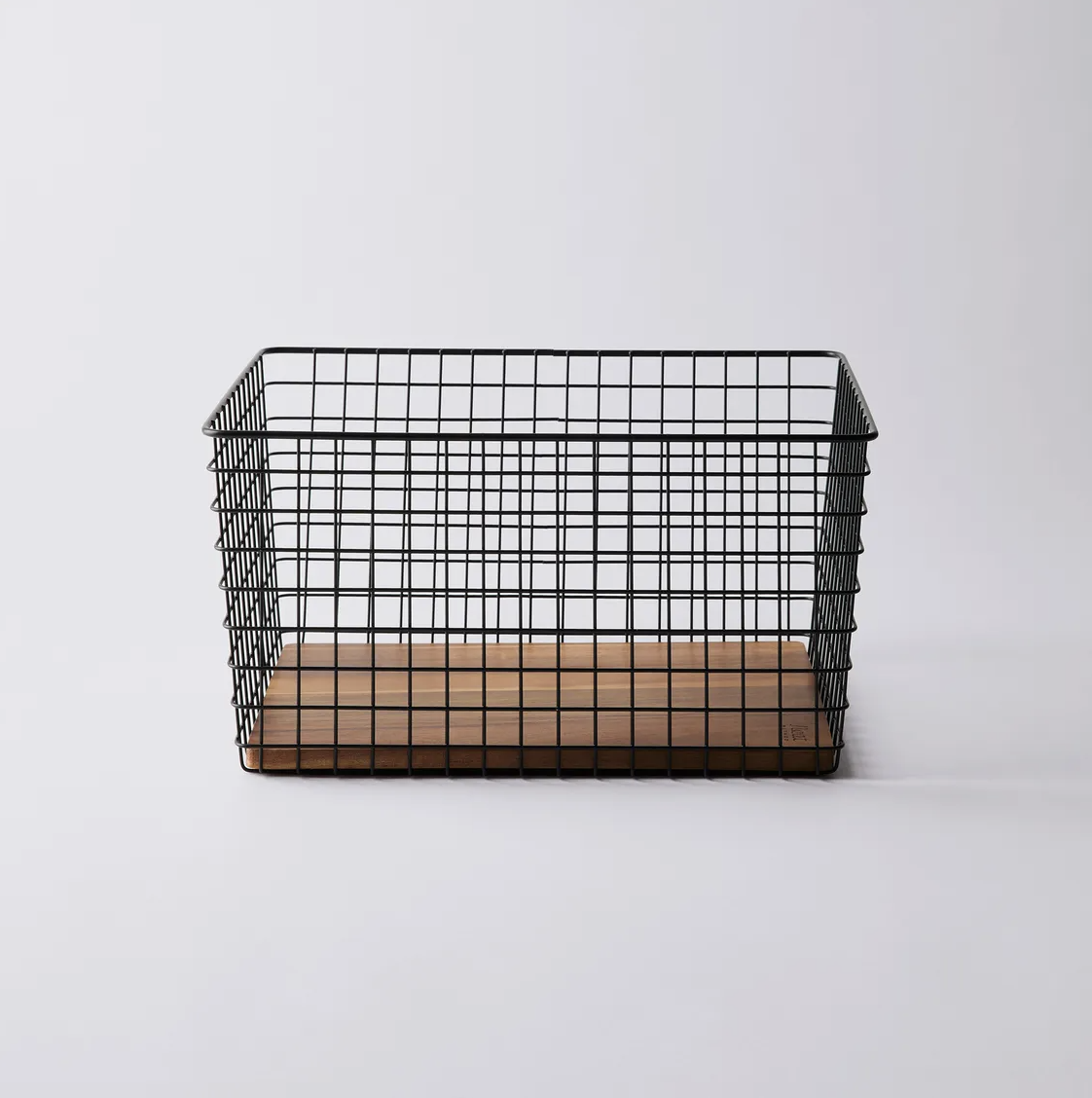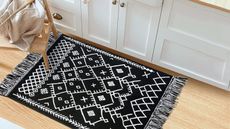Getting your kitchen organized is a sign that you are well and truly adulting. Managing both the ability to banish clutter and to actually style your countertops and kitchen cabinets in the process is almost embarrassingly satisfying. And if you're working with only a few cabinets and drawers, then you're going to want to browse and buy a couple of handy kitchen organizers to make the most of every single bit of space you have.
Whether you have a ton of cooking space or just a countertop and makeshift cabinet in a tiny studio, the general kitchen area is in constant flux and gets used every single day, so it requires more upkeep than you might think. From streamlining your morning coffee routine to making your space feel guest-ready at any given moment, learning how to organize a kitchen like a pro is a good choice.
If you are chaotic by nature, sure, rummaging through 10 spare packets of wasabi before getting to the salt might feel homey, but sometimes, it's good to bring a little order into your space.
How to organize a kitchen ASAP
A better-organized kitchen will work way more efficiently than one that's full of clutter. You'll obviously have to clean regularly, but in a cooking space that's already well laid out, it's a far easier and more satisfying process. We spoke to a bunch more home organization and improvement experts to get their insights on exactly how to organize a kitchen — from top to bottom.
1. Take everything out
To get your kitchen organized, you need to know what you're working with. Depending on how big your kitchen is, you might not want to do this all in one day, but if you have pretty a small space, it's worth getting this first step out of the way in one go.
"I recommend that you designate a morning to look at every item in your kitchen," says Rhea Becker, founder of The Clutter Queen (opens in new tab). "Open every cabinet and drawer. Be sure that you really need or want those items."
2. Declutter before cleaning
Next, you should be pretty ruthless with your decluttering sesh, not just initially but going forward, too. "Toss out or donate anything you are not using and repeat this process on a regular basis," says Becker.
Be sure to throw away any trash or broken utensils and containers as you go. Once your kitchen items have been scaled-down, you'll be able to identify any areas that could do with more in the way of kitchen storage. Not to mention, you'll be able to clean the kitchen properly before organizing and putting everything in its place.
3. Curate your countertop essentials
Completely clear countertops are a dream, but it's unrealistic, especially for tiny kitchens. Reserve these prized spots for those items that you use all the time, be it your AeroPress or your fave air fryer. If you're not sure what should take precedence, consider having things like spice racks, large utensils, or kitchen knives within reach.
Not only will this make your time in the kitchen far simpler, but it will also create more of a flow while you cook, meal prep, or entertain.
Once you've decided on what you'll keep visible on countertops and what will be stored out of sight, you can start styling. You should still organize anything that's hidden, but these items can be less visually gorgeous. On the other end, you might want a cuter presentation for anything that's still in view.
In true The Home Edit style, decanter and label where you can.
4. Reassess how you're storing items
If your kitchen always feels chaotic, you'll first want to revisit and check in on your existing kitchen storage, exploring other options that might be better suited to your space and needs.
"The kitchen can quickly become the busiest room of the house," says Dan Wiener, founder and lead interior designer at Homedude (opens in new tab). "It's important to keep it tidy because an organized kitchen gives you more space to get more done. A great storage system is essential, and sorted kitchen drawers will make your life easier. It's safer, more time-efficient, and makes things easier to find."
If you have a small space and have the option to install kitchen shelves (unlikely if you rent), it can be a wise move as they will come in handy for items that might not have a home and won't take up floor space. If you do rent and you're finding that you need more storage outside of your kitchen cupboards, consider portable kitchen trolleys and islands. There are lots of cute models out there now.
5. Organize kitchen drawers and cupboards
Taking the time to organize kitchen drawers can actually make the whole room look more put together. If you have basic drawers, there are lots of ways to make them work better for your space. We love bamboo insert organizers for cutlery. These tick all the boxes since they're cute, functional, and serve as eco-friendly kitchen picks.
When it comes to your cabinets, use an assortment of different-sized baskets or boxes to categorize and keep items looking tidy. For instance, have a box for lentils, another for pasta, one for rice, etc. By doing this, you will also be able to find what you want a lot quicker.
Finally, in true The Home Edit style, try to decanter and store dried ingredients into reusable storage bowls, containers, and caddies to keep them fresh, ready-to-use, and pretty. Sustainable options made from glass, wood, or bamboo look good and are perfect for a greener approach to living. Versatile nested and stackable designs mean that you can save on space when certain sizes aren’t in use, too, whether that's in the cupboard or the refrigerator.
6. Try alternative storage methods
If your storage capacity is maxed out or if you're anticipating buying more cute things for cooking, tap into alternative storage and organization picks so that you'll never overwhelm your space again.
Remember to measure up so that you make the best use of space and can still close doors with ease. Fill this kind of space with cleaning items, food storage containers, and tea towels. It makes good pantry storage as well if you're lucky enough to have one in your home.
Over-the-sink drying racks are good options too if this is the most chaotic part of your space — think water all over the countertop — as these keep dishes dry and won't create any mess around the kitchen. They're ideal mostly if you're washing dishes the old school way and don't have a dishwasher.
7. Give every last thing a home
The best way to keep your kitchen organized is to take that classic Marie Kondo approach, which will make it easy to remember which parts of the room your materials rest in. That way you'll have that all-important intrinsic knowledge that the no, the chili doesn't live with the egg cups; or your spatulas with your coffee. Give all items a home and your kitchen will automatically channel zen, organized vibes.

8. Put boundaries up for items that don't belong
It's no secret that kitchens are multi-functioning spaces, but to keep your kitchen organized all year round, you need to put up some boundaries. If you WFH from the counter all day, make sure your charger and all other work-related items get put away somewhere else. The same goes if you've had family visiting or have been entertaining children. Keep toys and anything not cooking-related in another area.
"Most kitchens have very limited space, so you’ll want to use it wisely," says Brenda Scott, owner and operator at Tidy My Space (opens in new tab). Here’s a handy primer on exactly where to put things in your kitchen to make the most of the space you do have.
Cabinets:
- Consider using the top upper cabinets for light-weight items that are less used but still needed.
- Group like items together.
- Adjust the shelves, use risers, under shelf hanging shelves or even purchase another full shelf to accommodate smaller dishes.
- Most used items should be at eye level and nearest to the place used. For example, plates should be near the cooking surface and glasses should be near the sink.
Drawers:
- Use drawer dividers for utensils, pots and pans
- Place your largest pot in a cabinet with its lid on. Then turn over that lid and place it right back on the pot. The lid forms a relatively flat surface on which to stack your other pots.
Lower cabinets/drawers:
- Use lower cabinets for heavier items like larger kitchen appliances that you don’t use often enough to merit a spot on your counter
- Consider vertical dividers for baking sheets, pizza pans and trays instead of stacking them in a drawer.
Pantries:
- Store all food that doesn't need to be refrigerated in your pantry
- Get your pantry organization on point by grouping like items together and follow a first in, first out method to avoid expired or stale food
- Label all decanted food (including the label from the original container for food tracing, allergies and ingredients)
- Plan for a step stool in your kitchen plans, this helps to reach items on the top shelf safely.
Utensil drawers:
- Utensil drawers should only be used for your day-to-day utensils. Those corn holders you haven’t pulled out since 2007? Might be time to put them in storage. Wiener weighs in: ‘Sometimes having all utensils put together in one container can slow down productivity in the kitchen. It's why people love utensil trays! But sometimes these trays can end up being too small or too big, so only some utensils can be placed in them. This only ends up wasting both money and space. An expandable bamboo utensil tray is an awesome solution for that problem! It's adjustable, so you can tailor the compartments to fit the size of all your utensils.’
- Invest in a modular drawer organizer with separate compartments for each type of silverware.
